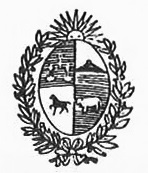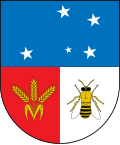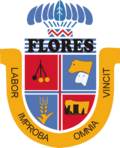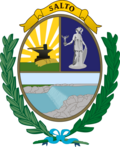| Coat of arms of Uruguay | |
|---|---|
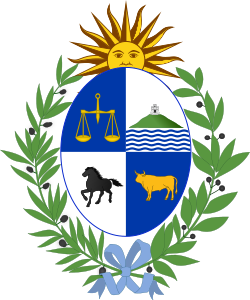 | |
| Versions | |
 1829-1906 | |
| Armiger | Oriental Republic of Uruguay |
| Adopted | 19 March 1829 |
| Crest | A Sun of May or |
| Shield | Quarterly the 1st: Azure, a Scales of Justice or; the 2nd: Argent in base Barry wavy Argent and Azure, a representation of the Cerro de Montevideo (Montevideo Hill) with its fortress on the summit proper; the 3rd: Argent, a horse Sable; the 4th: Azure, an ox Or. |
| Other elements | The oval is surrounded by a laurel branch on the left and an olive one on the right, joined at the bottom by a blue ribbon or a tie through the leaves/branches |
The coat of arms of Uruguay was first adopted by law on March 19, 1829, and later on had some minor modification in 1906 and 1908. It was supposedly designed by Juan Manuel Besnes Irigoyen.[ citation needed ] [1]

